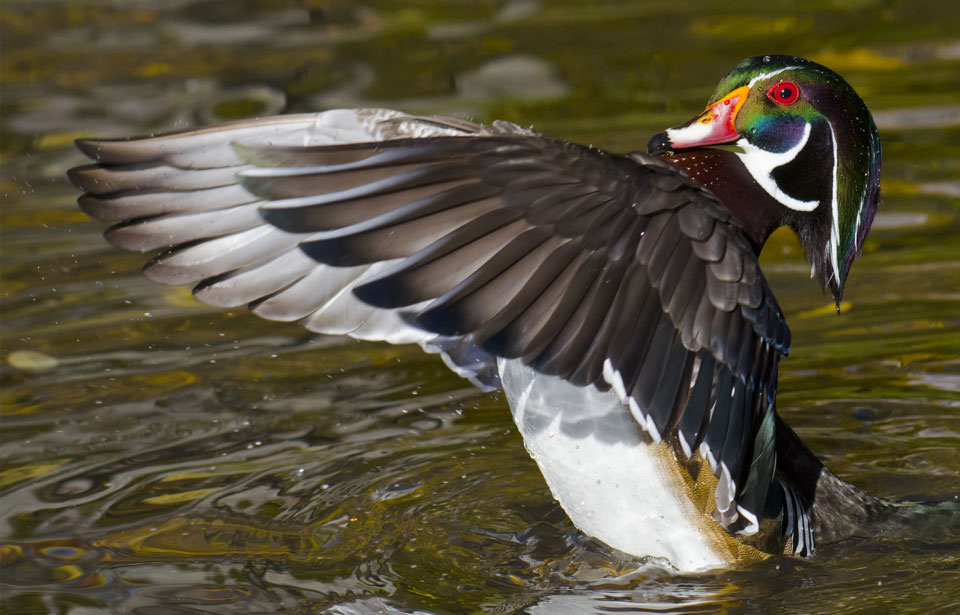The wood duck has bounced back from near extinction since the early days of this century. Overhunting and a shortage of nesting cavities once caused its population to plunge, but hunting regulations, together with the building of artificial nesting structures, have helped make this waterfowl one of our most abundant ducks.
Like goldeneyes and hooded mergansers, wood ducks usually nest in hollow trees around swamps, ponds, lakes, and creeks across Canada. Unable to make their own cavities, they depend on woodpeckers to excavate hollows — or on people like you to build and install nesting boxes. Here’s how to accommodate these unique waterfowl:
- Build a nesting structure out of cedar, with the roof sloping downward and overlapping at the front and back to shed rain.
- The depth of the box should be 60 cm; the floor 30 x 30 cm; the entrance hole oval and 46 cm above the floor, 8 cm high x 10 cm wide for wood ducks and hooded mergansers, 10 x 13 cm for common mergansers, and 9 x 12 cm for common and Barrow’s goldeneyes.
- Attach an 8-cm-wide strip of wire mesh on the inside front panel of the structure to enable ducklings to climb to the entrance hole and jump out.
- Line the inside with cedar shavings to a depth of 10 cm.
- Mount the box on an isolated tree (3 to 6 m high) facing the water’s edge or on a post 1.2 to 1.8 m above water, with no obstructions near the entrance hole. To prevent predation by raccoons, install a baffle or aluminum sheet around the base of the tree-trunk or pole.
- Angle the structure slightly forward to make it easier for ducklings to climb out.
- As a rule, install two nesting boxes per hectare of wetland.
- Inspect, clean out, and line the box with fresh wood shavings each fall.



